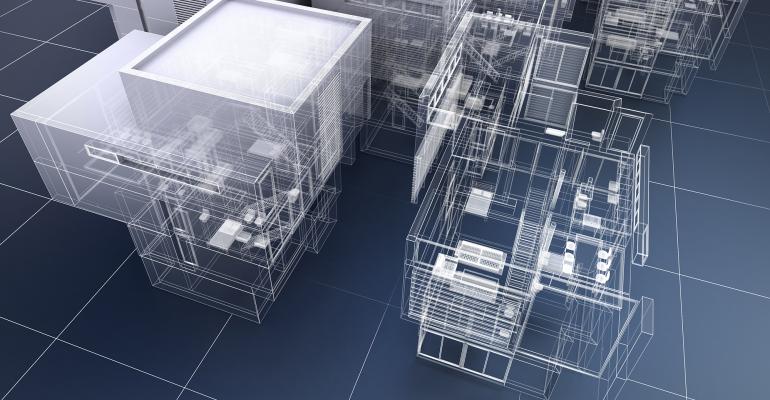Most Americans now acknowledge that the country’s housing shortage, and the lack of affordable housing specifically, is no longer just a challenge, but a massive crisis. Housing experts contend that the only way forward is to build our way out of the situation. But even that is difficult, given supply chain disruptions, labor shortages and the increased cost of materials.
Amid these conditions, Alfonso Medina, co-founder and CEO of Madelon Group, has no doubt that the only way to provide the necessary housing at an affordable price is to “productize” development by leveraging technology and using prefabricated and modular construction to streamline the process.
“Right now, developers are creating the wheel every time they start a new housing project, which is not only inefficient, but also expensive,” Medina says. “And as the cost of development continues to rise, the only way to make projects pencil is to make rent more expensive unless we can find a way to streamline and automate the entire process.”
With that goal in mind, Madelon Group recently rolled out a new technology platform that facilitates a seamless start-to-finish approach to multifamily development through prefabricated and modular development. The REDtech platform was built for a wide range of users, including both market-rate multifamily and affordable housing developers, with the goal of helping them achieve their goals, whether that’s maximizing returns for investors or making rents more affordable.
Standardizing and automating pre-development
Denver-based Blue Room Investing is the first organization to use REDtech. The impact investment firm has partnered with Madelon Group to develop a mixed-use, affordable housing project using the proptech platform. Construction on the five-story, 40,000-sq.-ft. building will begin later this year.
With REDtech, users can analyze, design and execute a new project significantly faster and easier than when using traditional methods. By leveraging the platform, multifamily developers and affordable housing agencies can easily underwrite a new project—gauging its viability, development costs and construction timeline.
REDtech allows users to visualize what the property will look like inside and out, create an Offering Memorandum for the land and evaluate operational costs. The platform can even connect developers with one of Madelon Group’s trusted factory partners, source the debt needed to fund a project and identify property managers that can oversee the property post-development.
Medina says REDtech is particularly useful for developers who are trying to figure out how to make the math work for smaller, infill projects. The platform reduces the amount of time and resources necessary for pre-planning and pre-construction, which directly impacts a project’s budget and the developer’s return on investment.
Replicable process for development
Blue Room Investing’s project in Denver, dubbed Liminal Space, will offer 64 furnished micro studios totaling 35,000 sq. ft. and 5,000 sq. ft. of ground-floor retail space in Denver’s Santa Fe Arts District.
“What makes the REDtech platform so powerful for Blue Room is that it takes a whole lot of data and crunches it so the decision-making process about a piece of land and what can be developed on it is extremely efficient,” says Sharon Schneider, president of Blue Room Investing’s housing initiative.
Of equal importance is REDtech’s ability to determine a project’s optimized floor plan based on modular and replicable models that have been pre-designed in conjunction with Madelon Group’s factory partners. In the case of the Liminal Space, Blue Room will use Indiedwell, a Pueblo, Colo.-based company that focuses on sustainable prefab manufacturing.
Schneider points out that hotel developers have had tremendous success with modular and prefabricated development, but multifamily developers have not, primarily because they go about the design process a bit backward.
“Whenever multifamily developers have pursued modular design and prefab construction, they’ve done it in a very inefficient way,” Schneider says. “They start with a design and then try to break that into a bunch of pieces that can be manufactured. REDtech’s platform is so innovative because it integrates design and manufacturing. It’s like using a bunch of different Lego bricks and building a project with them. That’s what makes it so economical and scalable.”
It’s that economy and scalability that Blue Room wants, Schneider says. “Our ultimate goal is to be able to provide quality housing across the state of Colorado that people can afford.”
At Blue Room’s Liminal Space in Denver, units are all equipped with a private bathroom, a small kitchenette, plenty of storage/closet space, a bed with nightstands and a living area with a sofa and storage surfaces. Units will lease for 50 percent of the area median income (AMI) or roughly $875 per month.
Schneider expects the REDtech platform to help Blue Room Investing attract investors who want to maximize their returns, but not at the expense of the communities they are building.
“There’s a growing segment of investors who want to help contribute to the solution for rent-burdened households,” she says. “Many of them are used to giving away money and not getting any return. But if we can reduce the cost of developing new housing, we can pass along that savings in the form of lower rents and allow investors to get their money back plus some extra.”





